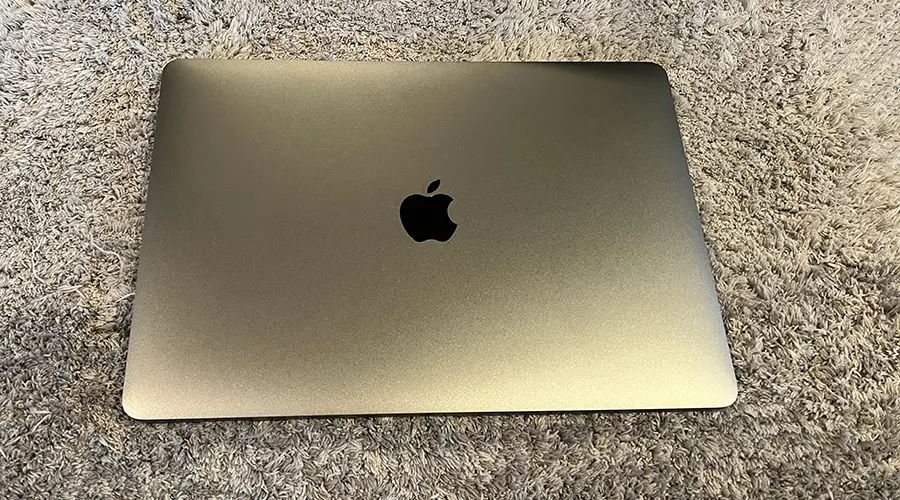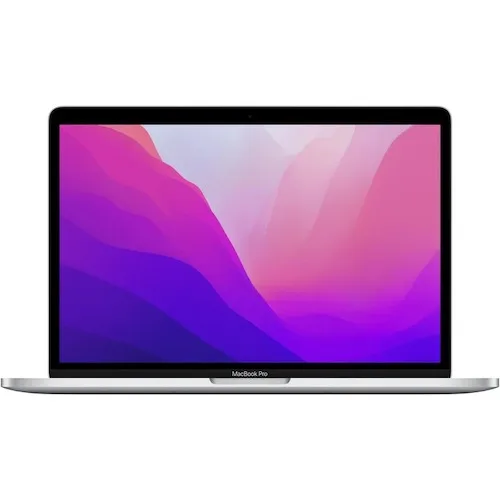Apple MacBook Pro 13 M2 review: M2 is faster, but other MacBooks are better
Summary
Quick verdict: Apple’s M2 processor is iteratively more impressive than the M1, but Apple’s insistence on sticking with an older design while refreshing the MacBook Air makes the 13-inch MacBook Pro a hard notebook to get excited about.
- M2 offers a nice power boost
- Up to 24TB of RAM available (at cost)
- Good battery life
- Fewer ports than the cheaper MacBook Air
- Pros who need power should probably opt for the 14-inch Pro models
- Regular users may be better served by the cheaper redesigned MacBook Air
At the same time it's looking distinctly backwards, opting not to change up the core design of the 13-inch MacBook Pro in any productivity-changing way.
It's easy to see why Apple's done this – it can make more profit off using existing factory tooling – but it leaves the 13-inch MacBook Pro in its own odd little niche relative to both the redesigned MacBook Air M2 and the existing 14-inch MacBook Pro M1 Pro.
It's genuinely hard to see who the MacBook Pro 13 M2 is meant to be for as a result. It's a nicely powerful machine, it's generally well built and the battery life remains good – but there's not much doubt that you can do better with either a cheaper or higher-spec MacBook, depending on your precise needs.
Design: Meet the new Pro, same as the old Pro

Image: Alex Kidman/Finder
When the MacBook Pro 13 M2 arrived at Finder's test labs, I unpacked it and placed it on top of a MacBook Pro 13 M1 model. I then went off to make a cup of coffee, because I'm nothing if not a caffeine addict.
On my return, I picked up the wrong MacBook for testing.
That's how similar the external design of the MacBook Pro 13 M2 is to its immediate – now discontinued – predecessor. Whereas Apple has made significant design changes to the newer M2 MacBook Air models, the 13-inch Pro model is exactly the same as it ever was.
That means the same binary colour choices face you – Space Grey or Silver – and the same quantity of ports, with microphone/headphone combo port on the right and dual Thunderbolt on the left.
Apple's design ideas are quite well entrenched by now, so is it really a problem if it sticks with a tried-and-tested formula for the MacBook Pro 13 M2?
I think it is, because it's put the 13-inch model in the weird position of being less flexible than both the 14-inch/16-inch MacBook Pro models – which feature more ports and expandability as a result – and the cheaper redesigned MacBook Air M2.

Image: Alex Kidman/Finder
That new Air has the same left-side dual Thunderbolt ports, but also MagSafe charging, which frees up a port if you need it. You don't get that luxury on the supposedly "Pro" model and Apple doesn't seem to have any good reason for why this is so.
It's actually worse than the cheaper MacBook Air M2 if you want to talk about screen size, too. While Apple sells both (or will do – I'm writing this before the MacBook Air M2 goes to market) as 13-inch models, the MacBook Air M2's packing a 13.6-inch display (measured diagonally) versus the 13.3-inch display on the MacBook Pro 13 M2.
You do technically get a slightly better PPI rate on the 13.3-inch MacBook Pro 13 M2 screen due to its 2560x1600/227ppi display against the Air's 2560x1664/224ppi.
I'll wait here while you figure out whether your eyes are sharp enough to pick a 3ppi difference.
Spoiler: They're not.
If the notch on the 14-inch and 16-inch MacBook Pro models bothers you, I've got some good news for you, because the use of the older design means that there's no notch to be seen on the MacBook Pro 13 M2.
I've also got some bad news, because that older design also means you're stuck with a less-than-stellar 720p webcam as well. It will get the job done, but for such a premium brand – and especially for its "Pro" model – it's disappointing not to see a better-bundled webcam.
What you do get – if it matters to you – is the only MacBook in Apple's line-up to persist with the virtual Touch Bar.
Given Apple has dropped it on the full-fat 14-inch and 16-inch Pro models, it seems likely that this might just be the last model to feature it if it's important to your workflow. I've always found it far less than useful, requiring multiple taps and eyes-on precision where a single repeatable key press would have done the job.
Performance: M2 is a nice performance bump… but it's not Apple's best

Image: Alex Kidman/Finder
The M2 processor that is the heart of the MacBook Pro 13 M2 represents, as you'd expect, an upgrade over the M1 processor found in the original MacBook Pro 13 M1 laptops. It's easily the single biggest reason why you might opt for the MacBook Pro 13 M2 specifically, although the details do get rather confusing if you're not careful.
Prior M1 models were all much of a muchness, which meant that we saw very similar benchmark results from M1 MacBook Air, Pro, Mac Mini and iMac models across the board.
There's some differentiation between the MacBook Pro 13 M2 and the MacBook Air 13 M2 in processor terms. On the Air, the baseline model gets you a CPU with an 8-core CPU and 8-core GPU, with an 8-core CPU/10-core GPU model available on the higher-specification model.
Opt for the MacBook Pro 13 M2 and it's 8-core CPU/10-core GPU all the way, so it's technically more powerful out of the gate.
A nice upgrade over the older MacBook Pro 13 M1 is the ability to configure a model with up to 24TB of RAM. The model Apple supplied for review was packing a rather more modest 8TB, along with a 256GB SSD. That could be upscaled to 512GB, 1TB or 2TB depending on your needs and budget.
The critical detail here is that because Apple Silicon puts processor, GPU, RAM and storage all on a single silicon wafer, you cannot internally upgrade them once you've bought your MacBook in any way at all. The best you'd be able to manage would be an external USB hard drive.
However, this isn't where the confusion stops, because Apple's still selling M1 MacBook Pro models, albeit that they're M1 Pro and M1 Max MacBook Pro 14 and MacBook Pro 16 variants.
You might think that M2 bests M1… and for most performance tasks you'd likely be dead wrong.
I can best illustrate this with a quick benchmark comparison, pitting the MacBook Pro 13 M2 against a range of Macs, running both Apple Silicon M processors and older Intel models.
Apple makes the argument that the M2 MacBook Pro 13 is best suited for those upgrading for older Intel models and it's probably right. To give that some context, I also threw in a much older MacBook Pro, with a 2015 MacBook Pro model benchmarked as well.
Here's how those CPUs compare:
The M2 outpaces the M1 models, as expected, with an 18.7% bump in direct CPU performance. That's not going to be enough by itself to prompt an upgrade for most M1 MacBook Pro 13 owners.
However, the gap becomes far more apparent if you're jumping from an older Intel-based Mac, where Apple's silicon has a far wider performance jump.
How does that play out for a real-world task? It's about the same, both anecdotally and using benchmarks.
Within the week that I've been testing out the MacBook Pro 13 M2, I've not been able to run and compare every scenario, but to give it a numerical picture, here's it compared using Cinebench R23's graphics rendering test:
The missing variable here is the newer M2 MacBook Air. I'd expect the entry-level model to fall a little short of the Pro, while it should be appreciably close for the upgraded variant, although the Pro's cooling fans might have a story to tell there under sustained loads.
Still, the MacBook Pro 13 M2 sits in an odd niche. If you truly need Pro-level power (and your budget can stand it), then the older M1 Max/Pro models will run rings around the M2 for now. It's not expected that we'll see M2 Max/Pro variants this year, so the 14-inch model would be a better productivity bet at only a slight size premium.
If the power of the M2 meets your needs, then you could save a few bucks and opt for the M2 MacBook Air. If it's over what you need, the older M1 MacBook Air is still available, albeit now only in an 8-core CPU/7-core GPU variant.
Battery: All day and more, but little has changed (again)

Image: Alex Kidman/Finder
Apple didn't change up the design of the MacBook Pro 13 M2 from its predecessor and predictably that means its claims around battery life haven't changed much either. It's still claiming up to 20 hours of Apple TV video playback or up to 17 hours of wireless web work.
That does speak to better efficiency for the M2 cores, given that they're faster. I've only been able to test the MacBook Pro 13 M2 out over a week's usage, so I don't have a full data set here, but in my own tests I was tending more towards around 13–14 hours of video and a little less of wireless web.
Apple at least tends conservative on its battery claims compared to other laptop makers and it's within what I'd call an acceptable range here. It's certainly possible to get through a day's work untethered with the MacBook Pro 13 M2, though clearly your specific workload may vary this.
Charging is via USB-C with a supplied 67W charger in the box able to top up the MacBook Pro 13 M2 pretty rapidly when it does run low on power.
Should you buy the Apple MacBook Pro 13 M2?
- Buy it if you absolutely must have the Touch Bar.
- Don't buy it if you want best-in-class Apple Silicon performance or the best-value MacBook.
There is nothing wrong with a laptop that is, in essence, a specifications bump. That's precisely what the MacBook Pro 13 M2 is, because side by side with its M1 predecessor, the difference lies in the performance of the M2 chip.
However, the MacBook Pro 13 M2 doesn't exist in isolation and in comparison to any other currently available MacBook model, it's hard to make the case for specifically buying it.
The new M2 MacBook Air is a more flexible model and cheaper to boot in its base configuration. The older 14-inch and 16-inch models are more powerful if what you really need is that Pro-level power for GPU-intensive applications. You do pay quite a bit more for those models, it's true, but in the Pro space where money is time, that's a price many will be willing to pay.
Where does that leave the MacBook Pro 13 M2? If your work is built exclusively around the Touch Bar, then it's definitely worth buying, because it's literally your only option left. That seems like a slender argument to me for dropping $1,999+ on a laptop.
Pricing and availability

Specifications
General
Configurable to: 16GB or 24GB
Display
Features
How we tested
I tested the MacBook Pro 13 M2 over a 1-week period before writing this review, using it as my primary working machine for writing, podcast production and video editing work, as well as extensive benchmark and battery testing. The unit used for this review was loaned to me by Apple.
The reviewer has more than 2 decades of tech product reviewing under his belt and is a multi-time Australian IT Journo award winner, including awards for best reviewer and best technical journalist.
